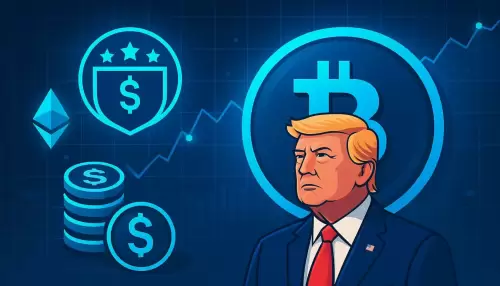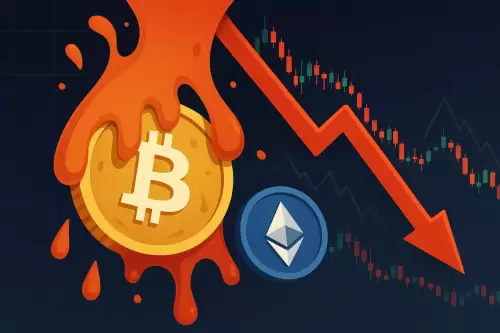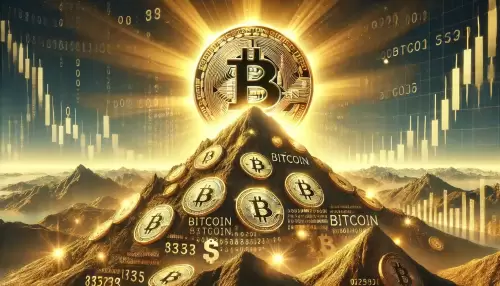 |
|
 |
|
 |
|
 |
|
 |
|
 |
|
 |
|
 |
|
 |
|
 |
|
 |
|
 |
|
 |
|
 |
|
 |
|
Cryptocurrency News Articles
Only Tokens With Utility Will Survive the Next Market Crash
May 08, 2025 at 05:28 pm
Right now, the entire crypto sphere contains over 10,000 active tokens. Yet only a handful will be worth something five years from now.

Right now, the crypto sphere contains over 10,000 active tokens. Yet, only a handful will be worth something five years from now.
What separates the winners from the rest isn’t hype or price spikes—it’s utility. That’s the one thing giving cryptocurrencies real staying power.
Meme coins might grab headlines, but tokens doing actual work keep showing up again and again—in finance, gaming, supply chains, and even identity systems. These tokens solve problems, power products, and build ecosystems.
But everything else? Just background noise.
Use Cases Make the Difference
A token without any purpose won’t survive long. Real utility gives coins their true value. Ethereum’s ETH demonstrates this perfectly—it’s not just a store of value but the fuel that powers decentralized apps and smart contracts.
Without ETH, the entire Ethereum network would grind to a halt.
Related: Bitcoin Price Prediction: As BTC Touches $21K, Analyst Points to Key Level For Next Move
Now, regular users reach crypto daily, especially in entertainment and payments.
Online gambling shows this clearly. Players increasingly deposit and withdraw using their crypto for one main reason: speed, privacy, and accessibility. That’s why the best crypto casinos in the USA have become so popular lately.
Bitcoin can let you skip banks, avoid delays, and play completely anonymously. It works fast, and people use it every day.
So, that kind of adoption shows utility in action. It’s not just website promises—it solves big problems for many players worldwide.
Crypto Utility Is Already Everywhere
Let’s examine how people use tokens right now—not hypothetically, but at scale.
Gaming leads the way. Certain platforms, such as Gala Games or Axie Infinity, give their players some in-game currencies that have real value.
You earn tokens through gameplay, trade them, or even buy digital goods with them. Axie generated over $1.3 billion in revenue in 2021, and even after the market cooled, tens of thousands of players still use it daily.
Logistics companies have already included blockchain into their work. VeChain helps BMW and Walmart China track items across their supply chains.
They record every step on the blockchain, reducing fraud and improving transparency.
Data storage is changing as well. Filecoin pays users for renting out their unused hard drive space. Think of it as a decentralized Dropbox, powered entirely by FIL tokens.
The advertising industry is rebuilding through tokens such as BAT (Basic Attention Token). Users of the Brave browser earn BAT for viewing ads.
This flips the traditional model—rewarding users, not platforms, for their attention. Advertisers still reach their audience, and users regain control.
Now compare that with meme coins. Dogecoin and Shiba Inu for instance. They get attention, spike, crash. Rinse and repeat.
Developers created Dogecoin as a joke in 2013. It pumped 12,000% in early 2021—then dropped just as fast. Shiba Inu followed the same pattern. So, while these tokens have no product, roadmap, or function, they can only exist for hype, not solutions.
But that’s the main issue. Without utility, nothing holds value when interest fades. According to Coinopsy, over 2,500 cryptocurrencies are already “dead.” Most lacked real purpose, demand, or community beyond short-term traders.
Speculation without substance always burns out.
How Utility Makes the True Value
Hype can still push certain price movements in crypto. But over time, tokens with actual use build stronger foundations.
Chainlink provides data to smart contracts—something every DeFi app needs. No Chainlink means no real-world data on Ethereum. That essential function keeps LINK relevant regardless of market cycles.
Uniswap’s token, UNI, gives holders a say in protocol upgrades. It’s more than an asset—it’s serving as a governance tool. AAVE and Compound work similarly in the lending field.
Ethereum remains the most developer-active blockchain. It powers everything from NFTs to DAOs to lending protocols. All of it because it’s built around actual use.
When a token forms part of the infrastructure, not just an investment, people need to hold, use, and spend it. This makes a natural demand, which builds value.
Utility and Regulation Go Hand-in-Hand
Regulators are now targeting speculative projects. The SEC and other agencies distinguish between securities and functional tokens, and that’s where utility brings more than ever.
Tokens with defined use cases, for payments, lending, identity, or infrastructure, are easier to defend. They don’t rely on price appreciation but form parts of real systems.
The EU
Disclaimer:info@kdj.com
The information provided is not trading advice. kdj.com does not assume any responsibility for any investments made based on the information provided in this article. Cryptocurrencies are highly volatile and it is highly recommended that you invest with caution after thorough research!
If you believe that the content used on this website infringes your copyright, please contact us immediately (info@kdj.com) and we will delete it promptly.






























































